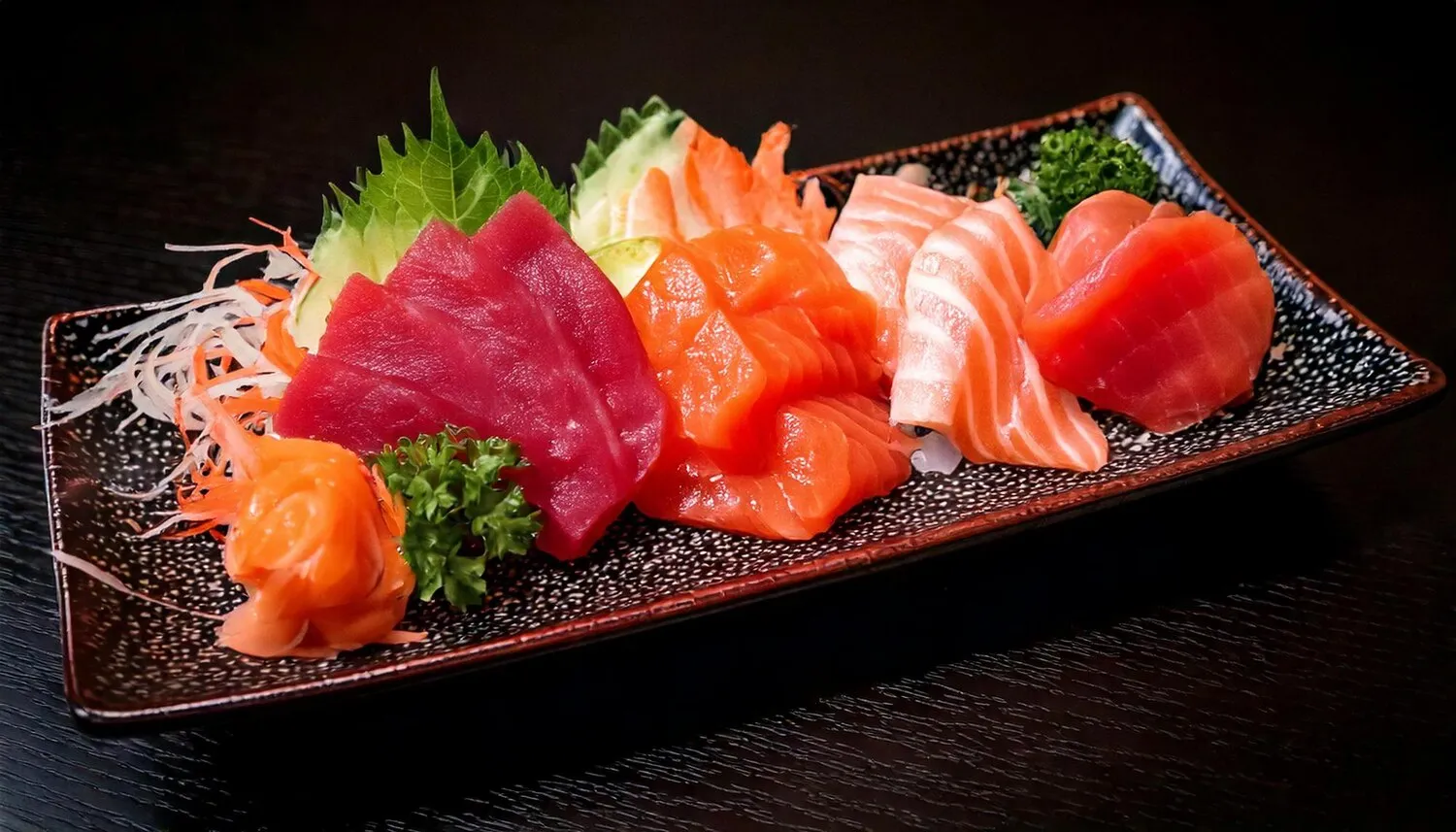
Sashimi
Variety of fresh, thinly sliced raw fish, prepared in the traditional Japanese style.
Nutrition Facts
* The % Daily Value (DV) tells you how much a nutrient in a serving of food contributes to a daily diet. 2,000 calories a day is used for general nutrition advice.
Toyama
Sashimi's origins can be traced back to ancient Japan, evolving from simpler methods of preserving and consuming fish. Initially, it was reserved for the upper classes due to the scarcity and expense of fresh fish. As fishing techniques and transportation improved, sashimi became more accessible, solidifying its place in Japanese cuisine. The dish reflects Japan's reverence for the sea and its resources.
Sashimi is deeply intertwined with Japanese culture, representing artistry, respect for nature, and a celebration of seasonal ingredients. Its presentation is as important as its taste, reflecting a dedication to aesthetics.
Presentation and Aesthetics
The arrangement of sashimi on a plate is carefully considered, with attention paid to color, texture, and balance. Garnishes like shiso leaves, radish sprouts (daikon), and edible flowers add visual appeal and complement the flavors.
Seasonality (Shun)
Japanese cuisine emphasizes the consumption of foods in their peak season (shun). Certain types of fish are prized for their flavor and texture at specific times of the year, influencing sashimi choices.
Respect for the Ingredients
Sashimi reflects a deep respect for the fish and the environment. Skilled chefs handle the fish with care, ensuring minimal waste and maximizing the quality of the dish.
The flavors of sashimi are primarily defined by the inherent taste of the fish itself, enhanced by subtle accompaniments. Freshness is paramount, allowing the natural sweetness, umami, and subtle textures to shine.
The flavor profile varies significantly depending on the type of fish. Tuna (Maguro) offers a rich, meaty flavor, while salmon (Sake) is known for its buttery texture and milder taste. White fish like sea bream (Tai) have a delicate, clean flavor. Wasabi provides a pungent kick that complements the fish, while soy sauce adds a salty and umami element. Ginger (Gari) is used as a palate cleanser between different types of sashimi.
Wasabi Usage
Avoid dissolving wasabi directly into the soy sauce, as it dulls the flavor. Instead, apply a small amount of wasabi directly to the fish before dipping it lightly in soy sauce.
Soy Sauce Dipping
Only dip the fish lightly into the soy sauce to avoid overpowering its delicate flavor. Too much soy sauce can mask the subtle nuances of the fish.
Eating Order
Generally, it's recommended to start with lighter-flavored fish and gradually move towards richer, fattier varieties. This allows you to fully appreciate the nuances of each type.
Ginger as Palate Cleanser
Use pickled ginger (gari) between different types of fish to cleanse your palate and prepare you for the next flavor profile. Do not eat it with the fish itself.
Explore additional Raw fish dishes and restaurants
Explore Raw fishDiscover top dining spots and culinary experiences in Paris.
Explore ParisLearn more about the food culture, restaurant scene, and culinary heritage of France.
Explore France